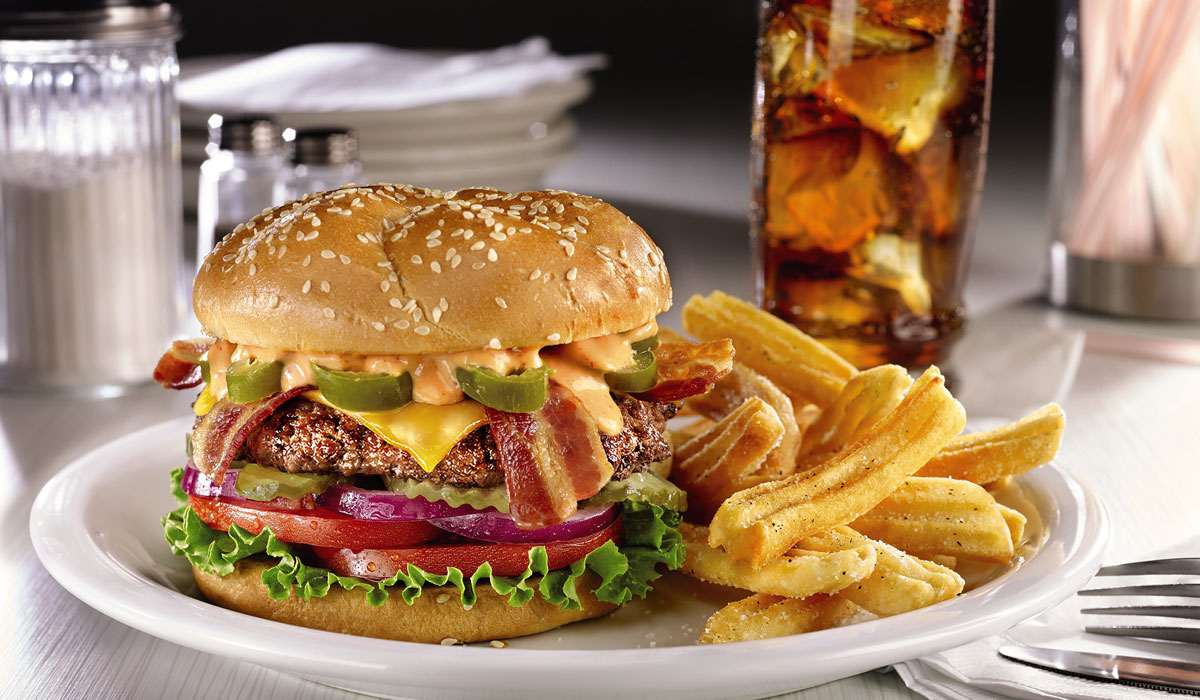Denny’s revitalization strategy has touched every aspect of the brand. From new menu items to restaurant facelifts, the casual-dining brand is doing everything it can to attract new customers and turn them into loyal diners.
On the heels of its first-quarter earnings call, Denny’s launched a new campaign to help guests interact with the new changes it’s been making. The “See You at Denny’s” campaign and tagline invites customers to experience the next phase of the legacy company.
“In a coordinated effort with our franchise partners over the last several years, we’ve invested in higher-quality ingredients, more comfortable dining spaces, and maintained a focus on impactful diversity, equality, and inclusion initiatives,” Denny’s chief brand officer John Dillon said in a statement. “We have long been the place where people come together. More than an ad campaign, ‘See You at Denny’s’ is a sign of our continued commitment across the organization to create a place where the modern American family can come together and connect over a delicious meal.”
The new campaign features spots inspired by Denny’s diverse guests. Created by agencies EP+Co, Conill and Fluent360, they feature family gatherings, dinners with friends, and dedicated commercials to African-American and Hispanic guests. The new creative will run on TV, as well as digital, streaming, and social platforms.
A big part of Denny’s reinvigoration surrounds restaurant remodels of both company-owned and franchise locations. The new Heritage design is now in 83 percent of Denny’s locations.
During Q1, franchisees completed 44 remodels and one company story was remodeled. With a new modern and comfortable dining atmosphere, the locations are receiving positive feedback from customers, Denny’s said.
They’re also generating mid-single-digit sales lifts, Denny’s CEO and president, John Miller, said during an April 30 conference call. In Q1, same-store sales remained positive with a 1.3 percent lift.
“This enhanced diner environment will continue to provide a significant tailwind for our brand revitalization strategy over the next several years,” Miller said.

Off-premises accounted for 12 percent of total sales across Denny’s this past quarter.
Since kicking off its strategy to become a majority-franchised company, Denny’s continues to sell corporate stores. The initial goal was to migrate Denny’s franchised units from 90 percent to 95-97 percent over 18 months. In order to get there, Denny’s needs to move between 90-125 company units.
Denny’s closed three sales in Q1 and has dealt another three so far in Q2. Since last October, it’s refranchised 14 venues.
“The pace of transactions is on schedule with our expectations, and we continue to be encouraged by the interest from the franchise community,” Denny’s chief financial officer Mark Wolfinger said. “We are excited to use this refranchising strategy to stimulate additional growth for our franchise partners and to attract new franchisees to the Denny’s brand.”
Wolfinger estimated that Denny’s would generate $30 million from the sale of 25-30 percent of 95 company-owned properties. The sale of these lower-volume restaurants will also help the company acquire higher-quality locations.
Refranchising is just one part of Denny’s aggressive growth strategy, though.
Since the revitalization began last October, more than 350 restaurants have opened. At the end of the first quarter, Denny’s restaurant count was 1,705 locations.
Denny’s also launched a new training system during Q1 in order to maintain standards across all locations. The “Delight and Make It Right” service platform is an e-learning system created along with franchisees to enhance field training and reinforce proper processes.
“While we have made substantial progress thus far, we acknowledge opportunities remain in order to achieve our full potential. We are focused on closing the gaps to those expectations,” Miller said.
Denny’s still has room to grow outside the four walls. At the beginning of Q1, roughly 71 percent of domestic locations interacted with delivery services. That number grew to 79 percent by the end of the quarter. Over the course of Q1, delivery-capable locations grew from 77 to 89 percent.
“This means we have an opportunity to further grow our off-premises business as more restaurants eligible for delivery sign on to actively participate with delivery partners,” Miller said.
Off-premises accounted for 12 percent of total sales across Denny’s. This is up from 7 percent when the chain first launched Denny’s On Demand almost two years ago.
“Our expanding off-premise strategy enables us to reach younger guests and increase our brand awareness,” Miller said.
Denny’s shook up its core menu during Q1, adding chicken tenders and a new wild-caught haddock fillet to the menu. The chain also rolled out Strawberry Pancake Puppies, crepes, and a Southwest chorizo burger on its LTO menu.









